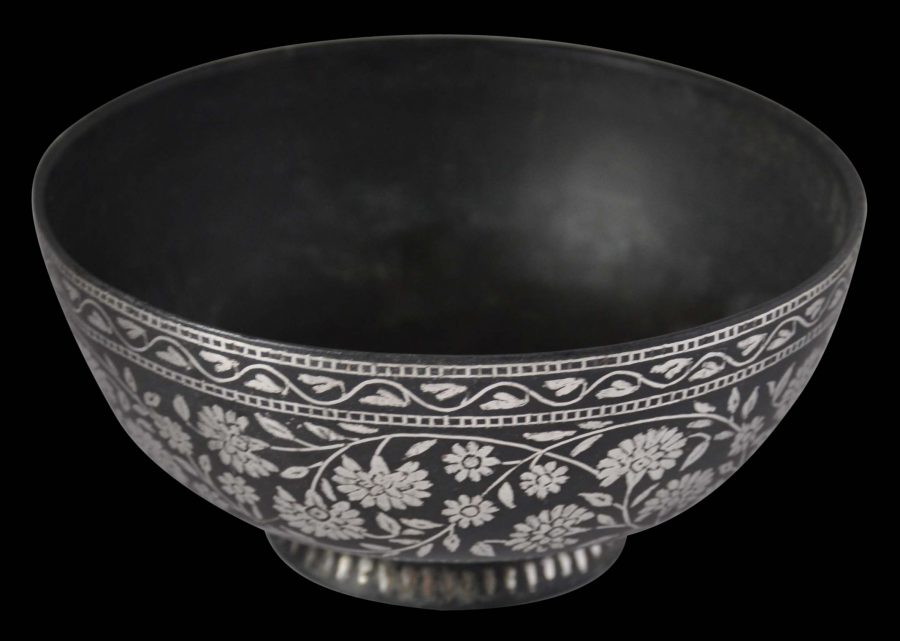This fine, hemispherical bowl with a flared ring foot is decorated with silver inlay and a darkened ground known as the Bidri technique.
The sides are decorated with carnation flower scrolls within scrolling borders. The lower register has an additional lotus petal border.
The foot is decorated with a row of silver leaf-like dashes, and the interior has the remnants of a central silver-inlaid lotus pattern.
The more open design of the silver inlay suggests an 18th century dating. The silver inlay became more congested, and arguably less aesthetically pleasing by the 19th century.
Bidriware originated in the city of Bidar in the Deccan. It is cast from an alloy of mostly zinc with copper, tin and lead. The vessels so decorated are overlaid or inlaid with silver, but also sometimes brass and gold. A paste that contains sal ammoniac is then applied which turns the alloy dark black but leaving the silver, brass or gold unaffected.
The bowl here is in fine condition. There is comparatively little loss to the silver inlay on the bowl’s exterior. The interior, however, has some green discolouration from exposure to water and the central silver inlaid floral motif is largely worn away.
References
Mittal, J., Bidri Ware and Damascene Work: in Jagdish & Kamla Mittal Museum of Indian Art, Jagdish & Kamla Mittal Museum or Art, 2011.
Stronge, S., Bidri Ware: Inlaid Metalwork from India, Victoria & Albert Museum, 1985.
Zebrowski, M., Gold, Silver & Bronze from Mughal India, Alexandria Press, 1997.







